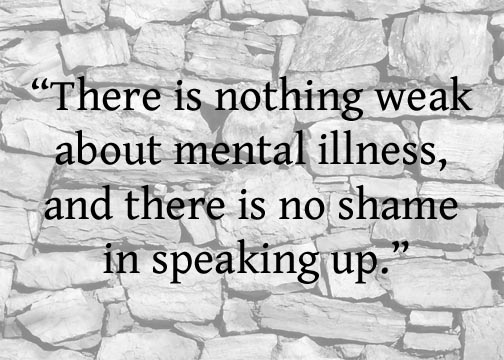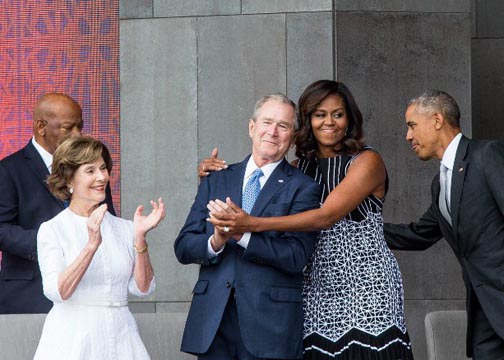Between the extravagance, excess, egos, and emotions of a typical awards show (both onscreen and in a social media sphere in which everyone seems to be ever-more-easily offended by anything and everything), it’s easy to believe that the celebrities in attendance live in a world totally removed from our own, more mundane existence.
But every once in a while, there are moments that defy expectation, give us pause, and allow us not only to see their humanity but also to consider our own.
Last night’s Grammy awards had a number of notable storylines and unexpected moments, many involving the alleged rivalry between Adele and Beyonce, each of whom, we can assume, arrived at the ceremony with her own hopes (and perhaps even objectives) for the evening.
In the weeks leading up to the broadcast, the media has dedicated quite a bit of ink (or whatever the digital equivalent to ink happens to be) to the path each woman had taken to the ceremony and, in the process, took every opportunity to underscore as many contrasts as possible between them.
On paper, neither woman had the night she likely wanted – or even the one she expected.
It’s probably safe to assume that Adele hoped to collect at least a couple of the awards for which she was nominated (and, if her bejeweled lemon pin was any indication, to be standing offstage when Beyonce claimed the trophy for Album of the Year), to pay homage to the late, iconic George Michael, and to redeem herself after last year’s mic-marred performance of “All I Ask” (in which the piano mic actually fell into the piano and her own vocal mic malfunctioned, resulting in the worst – by far – live performance of her career).
Things didn’t quite work out that way.
She won every award for which she was nominated (including four in which she was nominated alongside Beyonce) – and her performance of “Hello,” which opened the broadcast, was well received, but she stumbled at the beginning of her heartfelt tribute to George Michael before stopping, restarting the song, and delivering a truly moving performance of an aching, stripped-down arrangement of his hit “Fastlove.”
It was an incredible night, but it wasn’t perfect.
It’s probably safe to assume that Beyonce hoped to collect at least a couple of the major awards (Song, Record, and/or Album of the Year) for which she was nominated, to celebrate and give voice to an all too often unheard, unappreciated, underserved, and underrepresented population, and to further cement her legacy as one of the most innovative, ambitious, experimental, challenging, and iconic live performers in music today.
Things didn’t quite work out that way.
She owned the stage during an epic nine-minute performance and delivered an impassioned, empowering speech when accepting her award for Best Urban Contemporary Album for Lemonade. She also won the award for Best Music Video for “Formation,” further underscoring her command of visual performance, but she walked away without any of the three biggest awards for which she was nominated.
It was an incredible night, but it wasn’t perfect.
But things don’t have to be perfect to be amazing – or inspiring – or just plain beautiful.
Despite what the media (and social media) would like us to believe, neither woman had any reason to be ashamed of her accomplishments last night, but still – if they could have changed the way that things played out – both of them probably would have changed the narrative at least a little.
Instead of isolating themselves within their own disappointments, however, these two women created a remarkable moment together.
After her upset win for Album of the Year, Adele took the stage in tears and spent the majority of her acceptance speech praising Beyonce’s talent and artistic and social impact. Beyonce, meanwhile, applauded Adele’s win. Then, as Adele spoke, Beyonce shook her head as if to say, “Please don’t diminish yourself,” and with tears in her eyes, repeatedly mouthed the words “thank you” and “I love you” to Adele.
It was a beautiful moment of mutual appreciation and mutual respect – something these women have been offering one another for years.
Reviewing the Grammys in an article for Rolling Stone, columnist Rob Sheffield wrote that both Beyonce and Adele “handled this moment with a graceful display of mutual admiration that made them both look more regal than ever. And on a night like this, how silly to think either queen could lose.”
If either woman had isolated herself within her own relative disappointments (or supposed “failures”) during the evening, that moment never would have happened – and neither woman would have experienced it. Neither would anyone in the audience. Neither would any of us.
I have a feeling both women will remember (and appreciate) that moment for a long time to come. So will many people in the audience. So will many of us.
It wasn’t a “perfect” moment for either woman. But it was a beautiful moment, and it was a moment that never would have happened on a “perfect” night.
===========================================================================
It’s easy to envision perfect moments. It’s also easy to lose ourselves (and our perspective) by investing too much emotion in…or putting too much emphasis on…or assigning too much importance to…experiencing and achieving them, especially when we do so at the expense of having – and enjoying – a different experience that we never, ever would have had within our preconceptions of perfection.

 Photo by Zach Gibson/AFP/Getty Images
Photo by Zach Gibson/AFP/Getty Images